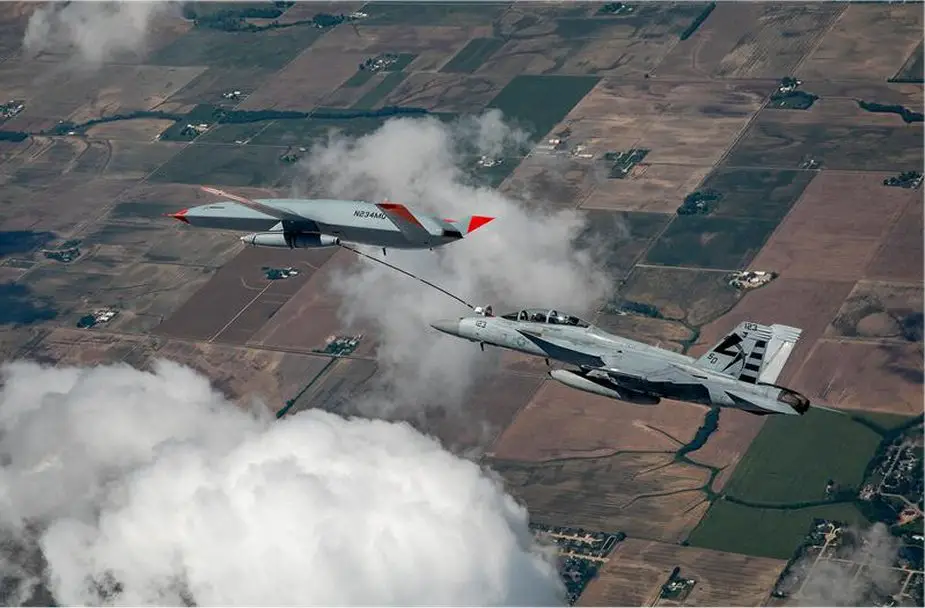Breaking news
MQ-25 conducts unmanned aerial refueling taking for the first time.
According to information published by Naval Air Systems Command on June 7, 2021, the MQ-25™ program successfully conducted the first-ever aerial refueling operations between a manned receiver aircraft and unmanned tanker from MidAmerica Airport in Mascoutah, Illinois.
Follow Navy Recognition on Google News at this link
 The MQ-25 T1 test asset refuels the Navy F/A-18 during a flight on June 4 at MidAmerica Airport in Illinois. (Picture source: Boeing)
The MQ-25 T1 test asset refuels the Navy F/A-18 during a flight on June 4 at MidAmerica Airport in Illinois. (Picture source: Boeing)
This successful flight demonstrated that the MQ-25 Stingray can fulfill its tanker mission using the Navy’s standard probe-and-drogue aerial refueling method.
During the flight, the receiver Navy F/A-18 Super Hornet approached the Boeing-owned MQ-25 T1 test asset, conducted a formation evaluation, wake survey, drogue tracking and then plugged with the unmanned aircraft. T1 then successfully transferred fuel from its Aerial Refueling Store (ARS) to the F/A-18.
The test flight will provide important early data on airwake interactions, as well as guidance and control, Reed said. The team will analyze that data to determine if any adjustments are needed and make software updates early, with no impact to the program’s test schedule.
Testing with T1 will continue over the next several months to include flight envelope expansion, engine testing, and deck handling demonstrations aboard an aircraft carrier later this year.
The MQ-25A Stingray will be the world’s first operational carrier-based unmanned aircraft and provide critical aerial refueling and intelligence, surveillance, and reconnaissance (ISR) capabilities that greatly expand the global reach, operational flexibility and lethality of the carrier air wing and carrier strike group.
It is an aerial refueling drone developed and manufactured by Boeing in the framework of the Carrier-Based Aerial-Refueling System (CBARS) program. It is an unmanned aircraft system designed for the U.S. Navy mission that will provide the needed robust refueling capability, thereby extending the combat range of deployed Boeing F/A-18 Super Hornet, Boeing EA-18G Growler, and Lockheed Martin F-35C fighters.
Boeing's MQ-25 design is powered by one Rolls-Royce AE 3007N turbofan engine delivering 10,000 lb (4,500 kg) of thrust; it is a variant of the engine used to power the Navy's MQ-4C Triton. The aircraft is less stealthy than flying wing UAVs. It does feature a stealthy fuselage shaping, a flush inlet to shield engine blades from radar and V-tail.





























